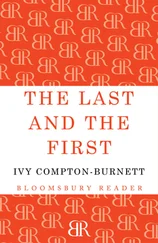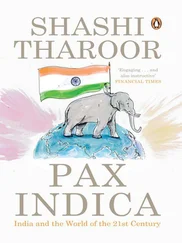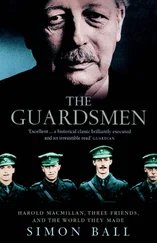Although he was no engineer, Standingford had looked at the technology around him and had begun to think about how it might be used to automate the work of the Stock Department clerks. Towards the end of the 1930s, he had come up with a scheme for ‘a device composed of the existing multiplying accounting machine and an arrangement of automatic telephone equipment and magnetic records … It would have stored information and recovered it automatically.’ Eager for the endorsement of a more technically minded supporter, he had shown his plans to Jack Edwards, Lyons’s chief electrical engineer. The most Edwards had been prepared to concede was that the idea was ‘not mad’.
With war in Europe becoming inevitable, there was no opportunity to take it further. Both Standingford and Edwards had signed up for war service and would not return to Lyons until 1945. As soon as the war was over, Edwards had sought out Standingford, having never forgotten the eager young manager’s questions. In the course of his war service as an engineer, Edwards had discovered that the military boffins had developed electronic devices to improve the aim of the anti-aircraft gunners who had successfully defended British skies. Electronics, he suggested, would be the technology of the future for office machines, much faster than the electromechanical machines then in use.
The field of electronics was launched almost a century ago with the invention of the thermionic valve (or vacuum tube as it is known in the United States). First invented by the British scientist John Ambrose Fleming in 1904, a valve looks like a small light bulb. It consists of a glass tube from which all the air has been removed, sealed to maintain the vacuum inside. Held upright, side by side within the tube, is a small number of metal wires, or electrodes. Fleming’s original invention had just two electrodes and so was known as a diode; later models incorporated up to five electrodes. Just as the valve in a plumbing system holds back water until someone opens it by turning a tap, thermionic valves allow current to flow in one direction only. They had revolutionised radio engineering during the 1920s, valve-based receivers replacing the crystal sets that had first been used to capture broadcasts. Edwards explained to Standingford that a calculating device made of valves would be thousands of times faster than any mechanical design as it would have no moving parts: all of its operations would be carried out by the movement of electrons in wires.
Standingford had hardly digested this information when he saw an article reporting that American engineers at the Moore School of Engineering at the University of Pennsylvania in Philadelphia had developed just such a machine, which the article described as an ‘electronic brain’. He was immensely excited at this development, and determined to investigate further.
In the post-war reorganisation of Lyons, John Simmons had been appointed comptroller. This somewhat archaic title referred in Lyons to the head of management accounting – the person responsible for presenting the company’s figures to the board in such a way that managers could identify areas for action and improvement. The Comptroller’s Department gradually assumed overall responsibility for the management of clerical work in the other departments. Standingford was promoted to become one of the assistant comptrollers. It was in this capacity that Simmons proposed to send him to the United States, in May 1947, to study advances in office methods. Accompanying him on the trip would be Simmons’s chief protégé, Raymond Thompson. Sensing that he would have an able advocate in Thompson, Standingford sounded him out before the two of them approached Simmons to ask permission to visit the Moore School while they were in the United States. He was more successful that he could have hoped – Simmons later insisted to an interviewer that it was Thompson’s idea to investigate computers.
Thomas Raymond Thompson had been recruited by Simmons to further his ideas for Lyons. In May 1931 he had written to Simmons on his own initiative. ‘Being up in Town for a few days, I am venturing to call and see you on Tuesday,’ he began. ‘I am looking for a position as Secretary, Assistant Secretary, Accountant or Statistician of a progressive business and I thought it possible that you might have some such position to offer me.’ Simmons’s reputation had evidently travelled far; for the previous two years Thompson had been working as acting secretary to a Liverpool department store, Owen Owen. Born in 1907 into a relatively humble family – his father ran a grocer’s shop – he won a scholarship to Cambridge where, like Simmons, he proved to be one of the ablest mathematicians of his generation and graduated with first-class honours.
There the similarity between the two men ended. While Simmons was soft-spoken and unfailingly courteous, Thompson was excitable, choleric and arrogant. Where Simmons spoke and wrote with thoughtful elegance, choosing his phrases carefully and striving for clarity, Thompson’s enthusiasm at times ran ahead of his powers of expression, so that the words tumbled out with little sense of whether his listeners were keeping up. He was given to explosions of temper if he believed that subordinates were slacking, or if crossed in argument, and was universally known (behind his back) by his initials TRT, no doubt for their resemblance to the explosive TNT. He grasped new ideas with great rapidity and was full of what one of his acquaintances described as ‘intellectual joy’, a quality that could be appealing as long as you were not on the receiving end of one of his wrathful outbursts. Simmons, for whom the younger man had enormous respect, was able to channel Thompson’s enthusiasm and harness his undoubted ability. In 1947 Thompson had just been appointed chief assistant comptroller, and so was the more senior of the two men making the trip to the United States.
At the time the post-war shortage of labour had to some extent lessened the burden of clerical work at Lyons. The company had shared the indomitable spirit of wartime London, serving tea in its surviving teashops (70 were destroyed by bombs) throughout the Blitz and entertaining soldiers on leave with the gaiety of its Corner Houses. Part of Cadby Hall, which survived unbombed, became a depot where volunteers packed boxes of rations to be dispatched to serving soldiers. Many Lyons staff at all levels either joined the services or took up war-related work elsewhere. One group of Lyons managers even ran a munitions factory at Elstree. With exemplary efficiency, the factory had turned out millions of bombs by the time the war was over.
The vast majority of Lyons staff who had been on active service returned to their old jobs in 1945. The post-war picture was subtly altered, however. One symptom of the harsher climate was that the Nippies had disappeared from the teashops. Labour shortages in wartime had forced Lyons to convert the shops to self-service cafeterias, and when the war ended, rising costs obliged the company to keep the same system. No waitresses in the teashops meant no Checking Department – the job for which John Simmons had dreamed of using a miraculous automatic machine had simply ceased to exist. But his vision had fired the imagination of his younger colleagues: ‘the idea,’ as Simmons later put it to an interviewer, ‘was in our blood’.
Yet Simmons himself was at first surprisingly lukewarm about Standingford’s plan to look at computers in the United States. Being unaware of any moves towards electronic computing in the United Kingdom, he assumed that the only way to acquire a machine of the ‘electronic brain’ variety would be to buy it from an American supplier, and it was virtually impossible for British firms to spend such large sums of money overseas at the time. But before he finally came to a decision he consulted his mentor, the ageing company secretary George Booth. Booth expressed the indulgent view that ‘youth should be given its head, even if that head contains unusual ideas’. (At the time Standingford was thirty-seven and Thompson forty, but such things are relative: Booth was seventy-eight.)
Читать дальше












